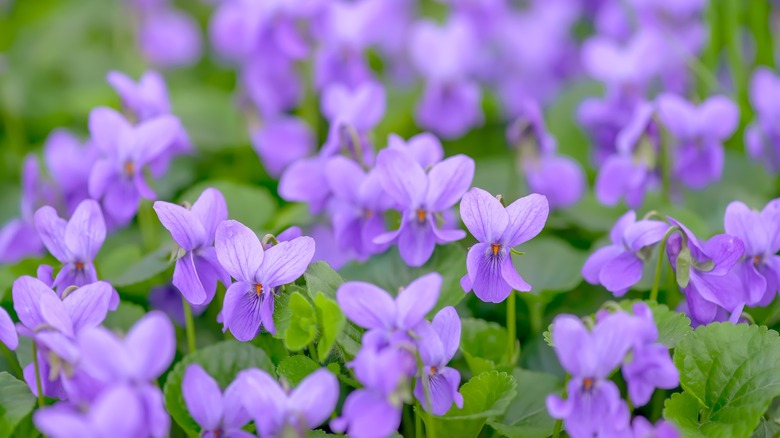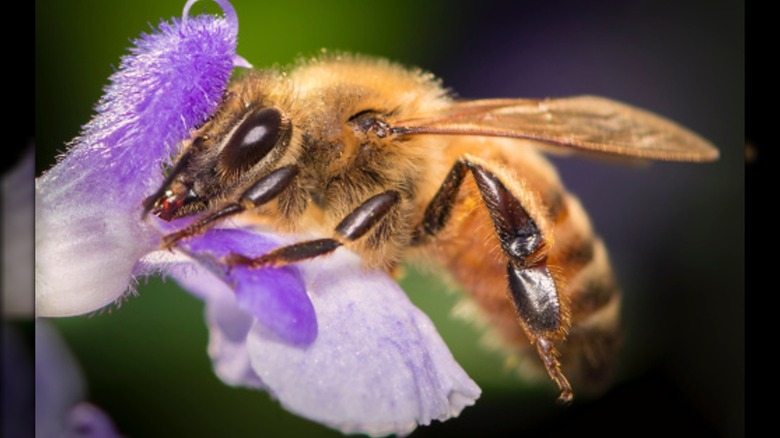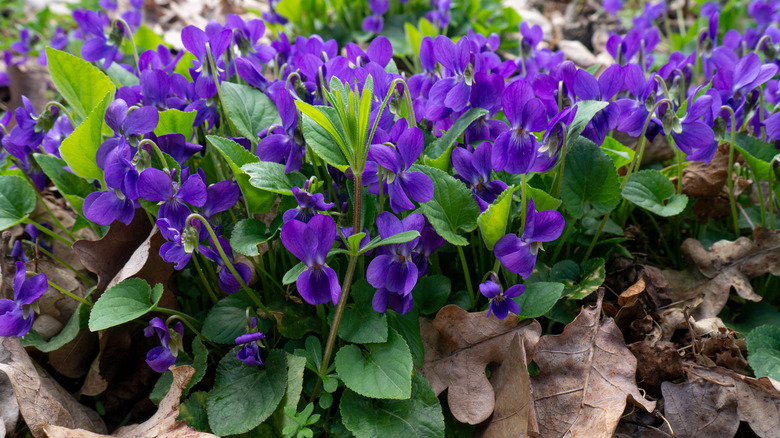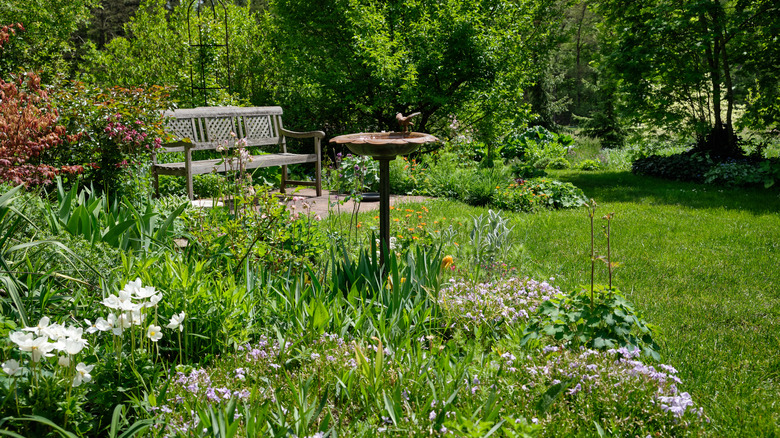4 Reasons To Let Wild Violets Grow In Your Yard, According To Our Master Gardener
It's funny how some plants we carefully nurture indoors are so similar to those we consider weeds in the lawn. While successfully-grown African violets are beautiful indoor plants, wild violets that pop up in the yard and garden are often considered a nuisance. However, if you look closely, they are not all that different. The delicate blooms of wild violets create a gorgeous carpet of green and purple in the spring when they are at their most vibrant. Before you attempt to eradicate this native plant from your landscape, consider the many benefits of letting it grow, like providing vital nectar and filling in spaces where grass doesn't grow well.
The primary reason wild violets are considered weeds is their ability to grow and spread quickly. They show up in turf grass and flower beds — areas you may want to keep perfectly manicured. This low-growing ground cover spreads quickly by rhizome division and seed disbursement, so once it is established, it can be a little difficult to get rid of. Thankfully, if you find some unwanted wild violets in your flower bed, they can be removed by loosening the soil and pulling up the clump of rhizomes. Keep the area well mulched to prevent seeds from sprouting. On the other hand, if you will consider allowing these natural beauties to grow in some areas of your yard, they offer plenty of benefits.
Early nectar for pollinators
Perhaps the most important job wild violets do in the home landscape is provide nectar for bees, butterflies, and other pollinators that have limited sources of food early in the season. As the various types of insects emerge from their winter slumber underground and in leaf piles, they need nectar, but there aren't many blooms this early in the year. Those early-blooming "weeds" can be the difference between starting a pollinator garden and creating a sterile environment that does not support beneficial insects.
This humble "weed" also provides the only source of food for the larvae of 14 species of greater fritillary butterflies and 16 lesser fritillaries, per the Xerces Society. Among these lovely insects is the Diana fritillary, the state butterfly of Arkansas. By allowing this plant to thrive in your outdoor space, you can create a butterfly oasis that benefits both larvae and adult butterflies.
Many types of early-season blooms grow in natural spaces. Wild violets join the nectar-providing ranks of other "weeds" like dandelions, henbit, purple deadnettle, and chickweed, just to name a few. Spraying these plants while they are blooming with herbicide will kill pollinators that use them as a source of food. If you can't stand the weeds, just keep them mowed so the blooms don't open. Remove the weeds when they are not blooming to help prevent damage to those insects.
No maintenance plant
Frankly, wild violets won us over with the phrase "no maintenance." How many plants can claim this description? It's true, though — like many "weeds," wild violets tend to mind their own business, needing little or no support to grow. They grow in lean soil, require no fertilization, and never need to be transplanted (they do that last part themselves). In areas where you struggle to get grass to grow either from seed or sod, wild violets may thrive.
Wild violets are also considered drought-tolerant, so they will never need to be watered. If you're struggling to establish or keep turf grass alive, letting your lawn go au natural can save a lot of money and time. However, in the case of extreme drought, it is possible that the green, heart-shaped leaves may dry out and die back a bit. Luckily, as soon as it rains again, those rhizomes will reward you with fresh green leaves that look gorgeous.
Perfect for no-mow lawns
As a plant that grows in all conditions between shade and full sun, wild violets make a beautiful addition to no-mow lawns. If you're tired of pushing a bulky lawn mower back and forth across your yard every two weeks or so throughout the heat of summer, transitioning to a no-mow lawn is something to consider. While wild violets tend to stay shorter in shady areas, they still work as a low-growing ground cover in any area and will grow taller in full sun.
The wonderful thing about natural lawns, besides not needing to mow, is that the combination of those native plants creates a mini ecosystem that is wonderful for soil health and pollinators. In addition to wild violets, you can plant white clover, creeping thyme, or whatever works best in your region to create a beautiful and beneficial outdoor space. However, if you are transitioning from turf grass to a no-mow lawn, it can take a while to complete the big switch, so be patient.
Easy edible
We work hard in our gardens to cultivate healthy food, but if you have wild violets growing in your yard, you already have an available and flexible source of nourishment that requires no maintenance. These are examples of the newest gardening trend of planting edimentals, which are plants that are both ornamental and edible. The simplest way to enjoy this greenery is to harvest young leaves to add to salads. The tasty leaves can also be chopped and added to soups or sautéed and eaten as freshly-cooked greens, similar to spinach. If you want to get fancy, you can serve a stunning salad with fresh, edible violet blooms on top. These flowers also freeze beautifully, elevating the look of your cocktails and mocktails. Many people infuse vinegar and syrups with these purple blooms as well.
Wild violets can also offer a number of health benefits. Some say that these "weeds" are high in vitamins A and C. It's amazing to think that these plants we struggle to get rid of provide an exceptional amount of anti-inflammatory and antioxidant properties. However, keep in mind that, while wild violets can be eaten, the common houseplant African violet is not considered edible.




